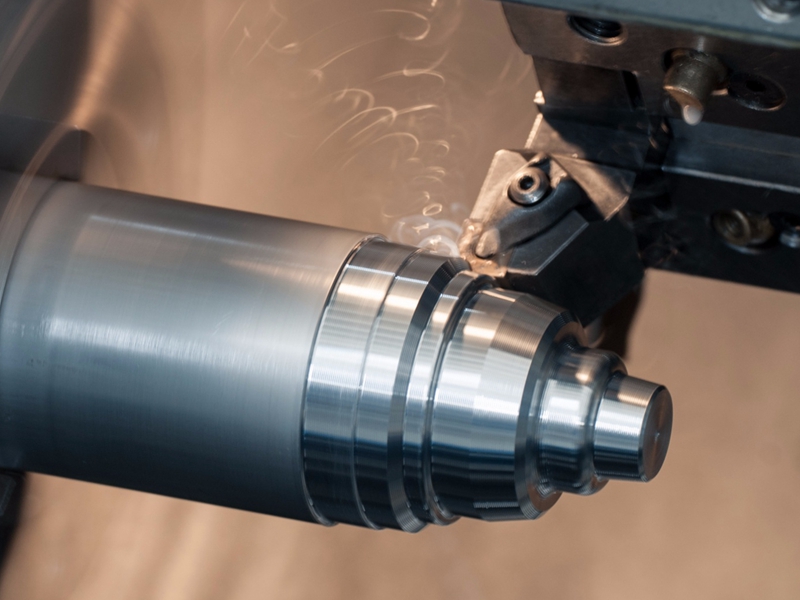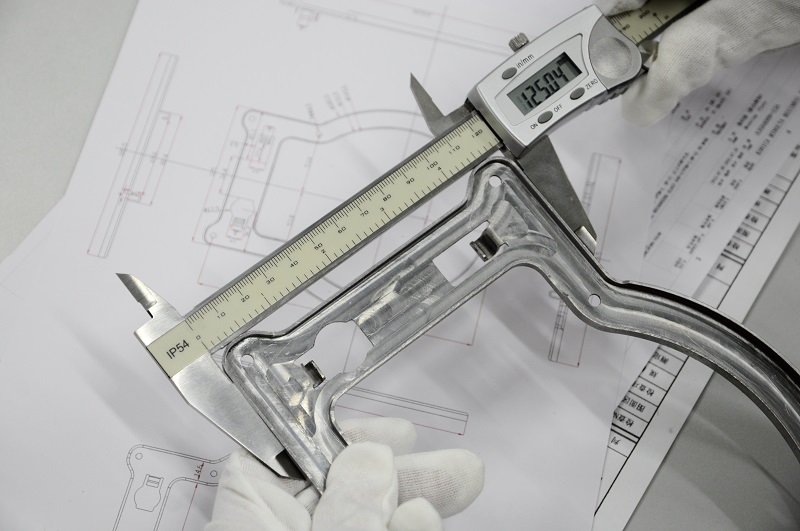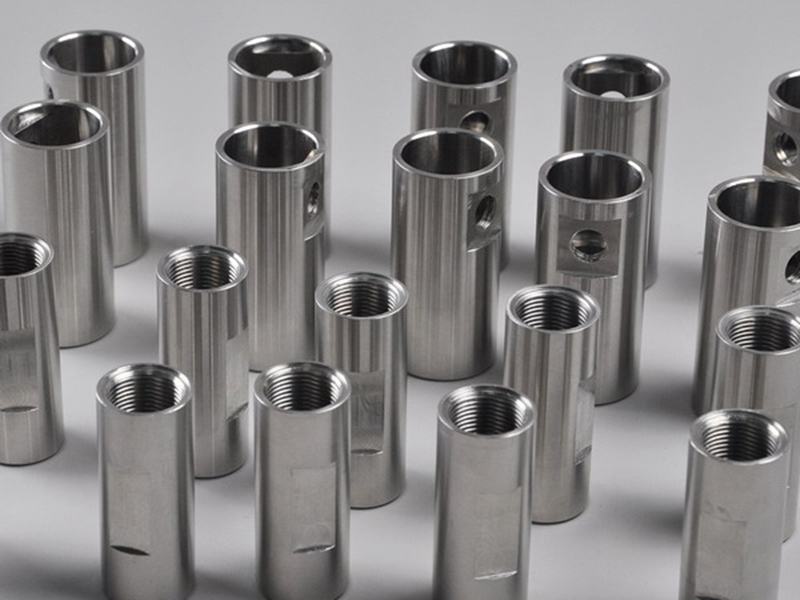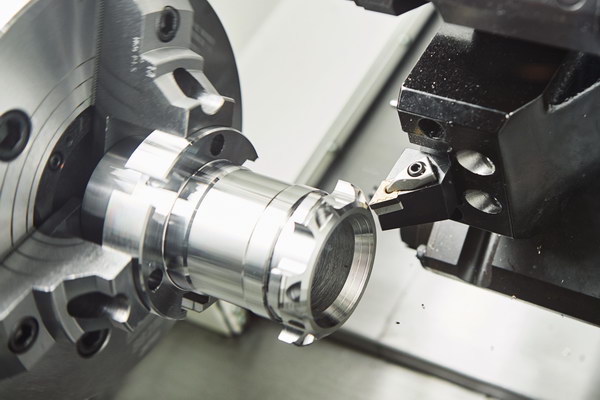
Datum.
Parts are composed of a number of surfaces, each surface has a certain size and mutual position requirements. The requirements of the relative position between the surfaces of the parts include two aspects: the dimensional accuracy of the distance between the surfaces and the relative position accuracy (such as axes, parallelism, verticality and circular runout, etc.).
The study of the relative position relationship between the part surfaces can not be separated from the datum, and the position of the part surface can not be determined without a clear datum. In its general sense, the datum is the point, line and surface on the part on which the position of other points, lines and surfaces are determined. According to its different functions, the benchmark can be divided into two categories: design benchmark and process benchmark.

1. Design datum.
A datum is a point, line, or surface from which measurements are made. In the case of the piston, the design datum refers to the centerline of the piston and the centerline of the pinhole.
2. Process datum.
The datum used by parts in the process of machining like turning and assembly is called process datum. According to different uses, the processed datum is divided into positioning datum, measuring datum and assembly datum.
1) Positioning datum: The datum is the point of reference from which all other measurements are taken. When positioning the datum, it is important to take into account the size and shape of the workpiece, as well as the type of machining operation being performed. According to the different positioning elements, the most commonly used are the following two categories:
Automatic centering positioning: such as three-claw chuck positioning.
To make a positioning sleeve, such as a stop plate, into a positioning sleeve.
Others are positioned in the V-shaped frame, positioned in the semicircular hole, and so on.
2) measuring datum: A measuring datum is a physical reference point used to take measurements. The datum provides a starting point from which all other measurements are taken. without a measuring datum, it would be difficult to take accurate measurements.
3) Assembly datum: the datum used to determine the position of the part in the assembly or product during assembly, called assembly datum.
Installation of workpieces.
In order to produce a surface that meets the specified technical requirements on a certain part of the workpiece, the workpiece must occupy a correct position relative to the tool on the machine tool before machining. This process is often referred to as the "positioning" of the artifact. After the workpiece is positioned, due to the action of cutting force, gravity and so on, a certain mechanism should be used to "clamp" the workpiece so that its determined position remains unchanged. The process of holding the workpiece in the correct position on the machine tool and clamping the workpiece is called "installation".
The quality of workpiece installation is an important issue in machining, which not only directly affects the machining accuracy, the speed and stability of workpiece installation, but also affects the productivity. In order to ensure the relative position accuracy between the machined surface and its design datum, the design datum of the machined surface should occupy a correct position relative to the machine tool when the workpiece is installed. For example, in the precision turning ring groove process, in order to ensure the circular run out of the ring groove bottom diameter and the skirt axis, the design basis of the workpiece must be coincident with the axis line of the machine tool spindle.
[caption id="attachment_171666" align="aligncenter" width="800"]
When machining parts on different machine tools, there are different installation methods. The installation methods can be summarized as direct alignment method, marking alignment method and fixture installation method.
The main results are as follows:
1) when using this method, the correct position of the workpiece on the machine tool is obtained through a series of attempts. The specific way is to install the workpiece directly on the machine tool, use the dial meter or the needle on the needle plate, visually correct the correct position of the workpiece, and correct it at the same time until it meets the requirements.
The positioning accuracy and speed of direct alignment depend on the accuracy of alignment, the method of alignment, the tools of alignment and the technical level of workers. Its disadvantage is that it takes more time, the productivity is low, and it has to be operated on the basis of experience and requires high skills of workers, so it is only used in single-piece and small batch production. Such as hard to imitate the shape of the alignment belongs to the direct alignment method. .
2) the method of line alignment this method is a method of using a needle on a machine tool to correct the workpiece according to the line drawn on the blank or semi-finished product, so that it can get the correct position. It is obvious that this method requires an additional marking process. The drawn line itself has a certain width, and there is a marking error when marking, and there is also an observation error when correcting the position of the workpiece, so this method is mostly used in the rough machining of small batch production, low blank precision, and large workpieces that are not suitable for the use of fixtures. For example, the determination of the pin hole position of the two-stroke product is to use the marking method of the indexing head to correct it.
3) fixture installation method: the process equipment used to clamp the workpiece and make it occupy the correct position is called machine tool fixture. The fixture is an additional device of the machine tool, and its position relative to the tool on the machine tool has been adjusted in advance before the workpiece is installed, so it is no longer necessary to find the correct position one by one when machining a batch of workpieces, which can ensure the technical requirements of machining, which saves both labor and trouble. It is an efficient positioning method and is widely used in batch and mass production. Our current piston processing is the fixture installation method used.
- The operation of keeping the positioning position of the workpiece in the machining process after positioning is called clamping. The device in the fixture that keeps the positioning position of the workpiece in the machining process is called the clamping device.
- The clamping device should meet the following requirements: when clamping, the positioning of the workpiece should not be destroyed; after clamping, the position of the workpiece in the machining process should not change, and the clamping should be accurate, safe and reliable; the clamping action is fast, easy to operate and labor-saving; the structure is simple and easy to manufacture.
- matters needing attention when clamping: the clamping force should be appropriate, too much will cause deformation of the workpiece, and too small will cause displacement in the machining process and destroy the positioning of the workpiece.
Mechanical concept of roughness
Surface roughness is a measure of the irregularities in the surface of a material. It can be caused by a variety of factors, including manufacturing defects, wear and tear, and environmental exposure. Surface roughness can have a significant impact on the performance of a material, as it can affect its resistance to wear, corrosion, and other forms of damage. The term "roughness" refers to both the size and frequency of the irregularities on the surface of a material. The size of the irregularities is typically measured in micrometers or nanometers, while the frequency is typically measured in cycles per inch (CPI).
Surface roughness can also be characterized by its wavelength, which is the average distance between adjacent peaks or troughs. The most common method of measuring surface roughness is with a profilometer, which uses a stylus to trace the contours of the surface and generate a profile. The profile is then analyzed to determine the roughness parameters.
[caption id="attachment_171667" align="aligncenter" width="800"]
Roughness representation.
There are 3 kinds of surface roughness height parameters:
- Arithmetic mean deviation of contours Ra.
Within the sampling length, the arithmetic mean of the absolute distance between the point on the contour line along the measuring direction (Y direction) and the baseline.
- Micro-roughness 10-point height Rz.
It refers to the sum of the average peak height of the five maximum contours and the average valley depth of the five maximum contours within the sampling length.
- Maximum height of contour Ry.
The distance between the top line of the highest peak and the bottom line of the lowest valley within the sampling length.
Nowadays, Ra is mainly used in the general machinery manufacturing industry.
The influence of Roughness on the performance of parts.
The surface quality of the machined workpiece directly affects the physical, chemical and mechanical properties of the machined workpiece, and the working performance, reliability and service life of the product depend to a large extent on the surface quality of the main parts. Generally speaking, the surface quality requirements of important or key parts are higher than ordinary parts, because the parts with good surface quality will greatly improve their wear resistance, corrosion resistance and fatigue resistance.
Surface roughness is an important consideration in many engineering applications, as it can have a significant impact on the performance of a component or system. For example, surface roughness can affect the tribological properties of a material, such as its friction and wear resistance. It can also affect the ability of a material to resist corrosion and other forms of damage.

In addition, surface roughness can influence the optical properties of a material, such as its reflectivity and transmittance. Surface roughness is also a concern in many manufacturing processes, as it can cause defects in the finished product. For example, surface roughness can cause problems with adhesion, machining, and metallurgy. Surface roughness can also make it difficult to achieve desired tolerances in manufacturing processes. As a result, surface roughness is an important factor to consider in the design and manufacture of components and systems.
There are many ways to reduce surface roughness, including using methods such as honing, grinding, lapping, and polishing. In addition, surface treatments such as electroplating, ion implantation, and vapor deposition can also be used to improve the surface smoothness of the material.
Cutting fluid.
1) the function of cutting fluid.
Cooling effect: the cutting heat can take away a large amount of cutting heat, improve the heat dissipation conditions, and reduce the temperature of the tool and the workpiece, thus prolonging the service life of the tool and preventing the dimensional error caused by thermal deformation of the workpiece.
Lubrication: the cutting fluid can penetrate between the workpiece and the tool, forming a thin adsorption film in the tiny gap between the chip and the tool, reducing the friction coefficient, so it can reduce the friction between the chip and the workpiece, reducing the cutting force and cutting heat, reduce the tool wear and improve the surface quality of the workpiece, which is especially important for finishing and lubrication.
Cleaning function: the tiny chips produced in the cleaning process are easy to adhere to the workpiece and the tool, especially when drilling deep holes and twisted holes, the chips are easy to block in the chip-holding groove, affecting the surface roughness of the workpiece and the service life of the tool. The use of cutting fluid can wash away the chips quickly, so that the cutting can be carried out smoothly.

2) types: there are two kinds of common cutting fluids.
Emulsion: mainly plays a cooling role, emulsion is made by diluting emulsified oil with 15-20 times water, this kind of cutting fluid has high specific heat, low viscosity, good fluidity and can absorb a lot of heat. This kind of cutting fluid is mainly used to cool tools and workpieces, improve tool life and reduce thermal deformation. The emulsion contains more water and has poor lubrication and antirust function.
Cutting oil: the main component of cutting oil is mineral oil, this kind of cutting fluid has low specific heat, high viscosity and poor fluidity, and mainly plays the role of lubrication. Mineral oil with low viscosity is commonly used, such as engine oil, light diesel oil, kerosene and so on.



